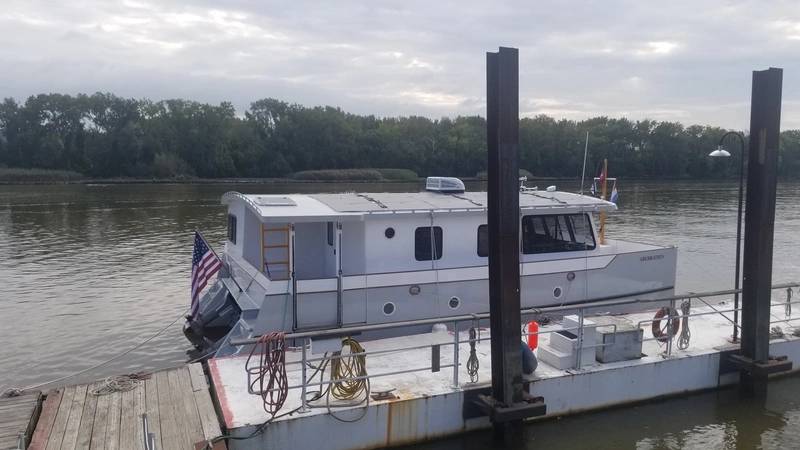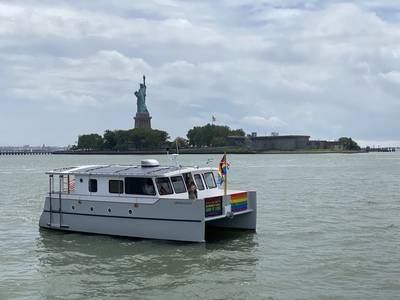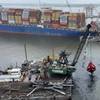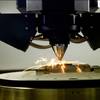Eye on Design: Repair and Conversion Conundrums in Hybrid Propulsion
I recently built a 35 foot Solar Hybrid Electric Wheelchair Accessible Catamaran for my wife who became wheelchair bound a few years ago. (In typing this sentence, I just realized that this vessel can be referred to as a SHEWAC)
It is only a 35 foot recreational vessel, but it contains all the propulsion pieces that are found in any other modern hybrid propelled vessel.
I have operated the vessel for one summer and have learned a lot of things that I had not considered when I first conceived her.
Fortunately, most of the learning has been positive, with lessons in all aspects of the design, construction, operation, and maintenance. Some of those lessons deal with repair and conversion implications and foreshadow issues that will become apparent to the ship repair and conversion industry as they encounter more and more non-standard vessels.
To be able to make the comparison, a description of a “standard” vessel is needed.
We have lived with standard vessels for almost 50 years (ignoring the residual steam vessels that were hanging on and the (re)emergence of diesel electric propulsion).
The vast majority of ships in the last 50 years were propelled by diesel engines through reduction gears with propellers. To make that work, a wide variety of auxiliary systems consisting of pumps, heaters, coolers, boilers, fuel treatment systems and intake and exhaust systems were needed.
While there are many variations on the theme, it was a rare day where a detailed explanation was needed to familiarize a repairer (or conversion contractor) with a looming repair job.
Either something had blown up, or one of the auxiliaries had died, or there was a mystery problem that required trouble shooting. In recent decades that approach was somewhat complicated and helped by electronic controls. Complicated, because the controls could malfunction, and helped, because the controls could help with trouble shooting of the system.
Regardless, the whole industry was helped by the fact that due to the extreme technical stability of ship propulsion concepts, the number of suppliers had become remarkably small due to consolidation. As such, in slow speed diesels, effectively, there were three worldwide suppliers; and while the number is somewhat larger for higher speed diesel engines and reduction gears, every yard had at least seen a few engines of each type and within its operating zone knew of manufacturers’ reps or specialists who could deal with just about every propulsion component if they did not have in-house specialists. Moreover, the pace of technology improvements was manageable (barring recent engine add-ons to stave the demise of internal combustion).
While the number of components on a non-standard (hybrid) vessel may not increase, the number of possible different components that may be present on any vessel vastly increases. On the simplest levels, it may be solar panels, controllers, batteries, and chargers, but that stuff is only the tip of the iceberg.
 The 35-foot Solar Hybrid Electric Wheelchair Accessible Catamaran built by the author for his wife who became wheelchair bound a few years ago. Photo courtesy Rik van Hemmen
The 35-foot Solar Hybrid Electric Wheelchair Accessible Catamaran built by the author for his wife who became wheelchair bound a few years ago. Photo courtesy Rik van Hemmen
On the far end, it may be kite controllers, hydrogen tanks, fuel cells, and fission reactors. All of that might be manageable if we were not in the middle of a technological whirlwind that we may have never seen in our industry. This means that a line of batteries may only be installed for a few years and will be superseded by the next generation of batteries and that there will be many manufacturers of batteries before the consolidation starts. And that will apply to every component in the propulsion system.
As such, every vessel that enters a yard in the next few decades or so will be likely to have unique propulsion systems and unique components, each of which needs to be individually figured out by a contractor who is offering to make repairs or offer conversions.
Because there will be such a rapid advance in technology, repairs may become relatively rare due to lack of knowledge in making repairs or lack of spares. This means that rather than making propulsion system repairs, conversions may be the order of the day.
That sounds really scary to ship owners who may see increased maintenance and repair costs in being unable to make repairs once they go hybrid. (It should be noted that many hybrid systems inherently have vastly lower maintenance costs due to fewer pumps, seals, heat exchangers, thru hulls and moving parts).
Strangely, this may not be as scary as it appears at first, since the march of technology comes to the rescue. The cost of hybrid components can be expected to go down quite rapidly, and the efficiency of these components can be expected to improve too, and then a conversion may actually be a life cycle cost saving.
As such, a component failure may actually be an opportunity, rather than a problem.
And component failures in well-designed hybrid systems are likely to be a much lower fraction of the overall vessel value than propulsion components in standard vessels.
Barring shipboard fires, which are extremely expensive to repair, the largest single damage cost aboard a vessel is an engine failure and a full engine failure can be a significant cost fraction of the entire propulsion system.
One of the first realizations I had in designing and building the SHEWAC was that the most expensive single propulsion component on the vessel was the standby generator at 3.4% of the total construction cost. Much lower than the cost of a propulsion engine. The full replacement of the generator unit would take about 6 hours in labor to remove and replace and can be replaced with any generator package of similar size. (Note: this strongly argues for high levels of standardization in interconnect features in hybrid systems.) If the vessel had been diesel propelled, the loss of a main engine would be a larger percentage, would incur higher labor costs for replacement, and even higher costs in additional component modifications and replacements if an identical engine cannot be procured.
While the electric components are not cheap, not one component comes close to the cost of an engine and can be replaced with a like (but not identical) component in the system.
Having said that, I did have a pause for thought when one of the electric outboards on the SHEWAC failed. The unit was still under warranty (these units are very reliable and I think it was a case of infant mortality). Initially, the manufacturer provided instructions and trickled various replacement components to the repair yard to see if it would fix the problem. This took time and I asked the manufacturer if they could just supply a replacement outboard. Instead, we were asked to ship the unit to a service center, which took more time to eventually have the unit fixed. I estimate the cost of all that troubleshooting, communication, shipping and labor came close to the cost of a new outboard ($8,000) and a new outboard would have resolved the issue over a month faster.
I have waited longer for a gasoline outboard to be fixed, so I have little to complain with regard to the delay; but, knowing that technology is changing fast, I wonder how much longer I can actually source a matched unit if there is another problem on this twin unit boat. Therefore, to have a spare on hand would not be a bad idea and that is just one ponderable in this expanding universe of repair and conversion issues.
- For each column I write, Maritime Reporter & Engineering News has agreed to make a small donation to an organization of my choice. For this column I nominate the Shake A leg Foundation. They first made me maritime ADA aware and nothing is cooler than having the wind serve as your legs.















